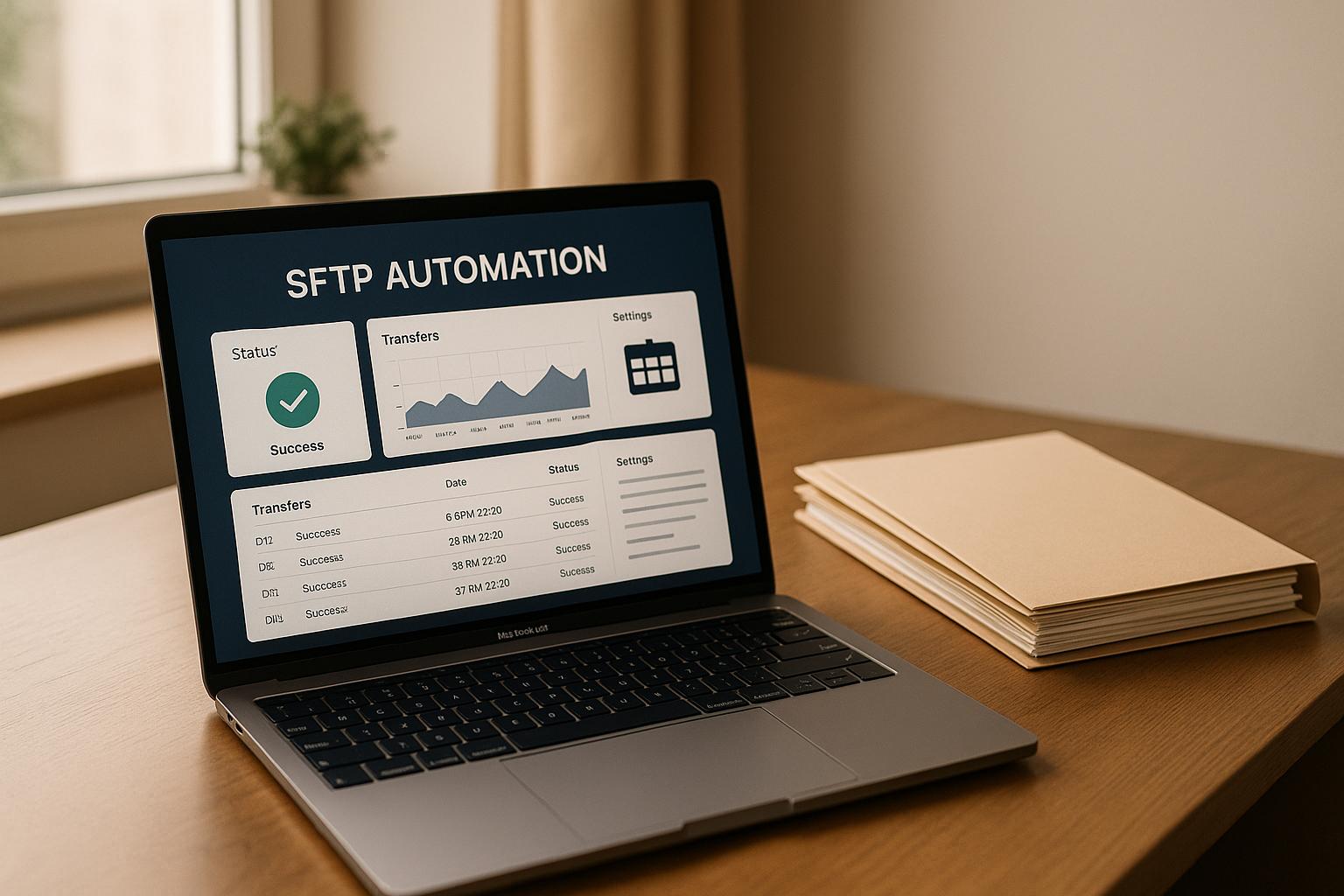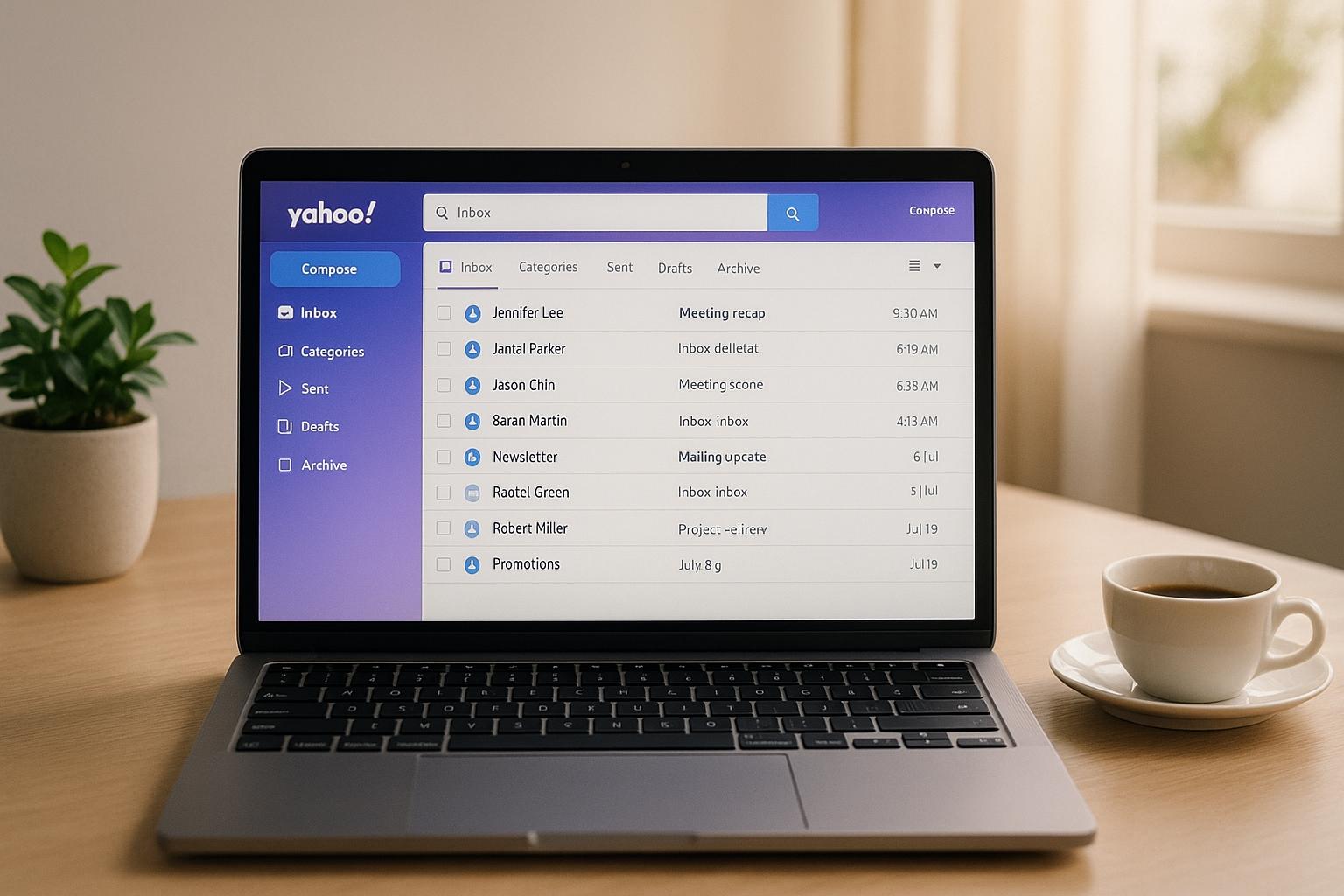Managing permissions manually across multiple SaaS tools can lead to security risks, onboarding delays, and compliance headaches. This case study highlights how a growing SaaS company automated its permission management process, improving security, reducing errors, and cutting onboarding time by 67%. Key improvements included:
- Centralized Identity Management: Microsoft Azure AD was used to centralize user roles and permissions.
- Automated Onboarding and Offboarding: SCIM and SAML protocols ensured accounts were created, updated, and deactivated automatically.
- Role-Based and Attribute-Based Access Control: Standardized roles and contextual rules provided precise control over permissions.
- Compliance and Security: Automated systems reduced access-related security incidents by 75% and simplified compliance audits.
The result? Faster processes, fewer errors, and stronger security - all while freeing up IT teams to focus on strategic tasks. This approach is scalable for businesses of any size.
What Is The Best Way To Manage SaaS Access Permissions? - The SaaS Pros Breakdown
The Business Challenge: Scattered Permission Management
The SaaS company in this case study faced a serious problem: their permission management system was all over the place. Over time, different departments adopted their own tools, creating a tangled web of user access that was difficult to manage and introduced significant security vulnerabilities.
Scattered Systems and Security Risks
The company’s decentralized approach to permission management left it vulnerable to numerous security issues. Each department relied on its own set of tools, leading to gaps where inactive accounts often went unnoticed. A security audit uncovered several alarming cases - former employees still had active accounts, some of which provided access to sensitive customer data and financial records. This fragmented system became a major obstacle when the company prepared for compliance certifications. Generating accurate access reports was nearly impossible because account records varied wildly across platforms.
The IT team also discovered that many employees retained permissions they no longer needed, even in critical systems. These oversights not only put sensitive information at risk but also created operational inefficiencies that made life harder for the IT department.
Manual Work and Team Overload
The lack of a unified system didn’t just create security risks; it also led to a massive workload for the IT team. Setting up accounts for new hires became a tedious, manual process. IT staff had to log into multiple platforms to assign access rights, which was time-consuming and error-prone. Sarah Chen, the company’s IT Director, described the strain this placed on her team. Mistakes were common - new hires sometimes received the wrong access, while departing employees often retained permissions far longer than they should have.
As the company grew, these manual processes became unsustainable. Departments started implementing their own temporary fixes, but these quick solutions only added to the security risks. It became clear that the organization needed an automated system to synchronize permissions and reduce the administrative burden on the IT team.
The Solution: Setting Up Permission Synchronization
To tackle the challenges of scattered permission management, the company introduced an automated synchronization system. This approach streamlined processes, replacing manual tasks with a unified system that also boosted security across all platforms.
Central Identity Management
The first step was to establish a single, reliable source for managing user identities and permissions. The company chose Microsoft Azure Active Directory (Azure AD) as the central hub for authentication and authorization. Leveraging their existing Microsoft 365 setup, the IT team configured Azure AD to act as the master directory, housing all employee information such as department assignments, job roles, and access needs. This addressed prior inconsistencies in permission updates.
With this system in place, any changes to an employee's status - like a promotion, department switch, or termination - automatically triggered updates across all connected systems. The implementation process also included reconciling duplicate or inconsistent user accounts to ensure smooth integration.
Building on this centralized identity framework, the company automated account lifecycle management using standardized protocols.
Automated Setup with SCIM and SAML
To further enhance efficiency, the company deployed the System for Cross-domain Identity Management (SCIM) protocol alongside Security Assertion Markup Language (SAML) for single sign-on (SSO) capabilities. SCIM streamlined the lifecycle of user accounts, automatically creating accounts during onboarding and promptly disabling them when employees left the organization.
SAML integration centralized authentication policies, simplifying the login process and reducing the need for multiple passwords. Key business applications - such as CRM systems, project management tools, and financial software - were configured to work seamlessly with SAML. This automation cut down the time required for account setup and ensured swift account deactivation, bolstering security.
To refine access further, the company introduced role-based and attribute-based controls.
Role-Based and Attribute-Based Access Control
The final piece of the solution was implementing Role-Based Access Control (RBAC) and Attribute-Based Access Control (ABAC) for more granular permission management. RBAC created standardized roles with predefined permissions, aligning access rights with the company’s organizational structure. This ensured employees had appropriate access across all connected systems.
ABAC added an extra layer of flexibility by evaluating contextual factors like location, access time, and device type. These rules allowed the system to enforce stricter controls on sensitive data and administrative actions. Temporary access could also be granted or revoked dynamically, depending on project needs.
This multi-layered strategy significantly reduced unauthorized access incidents. Additionally, detailed audit logs and automated compliance reports simplified regulatory reviews, making ongoing permission management more efficient and reliable.
Implementation Process: From Review to Launch
Transitioning from a scattered permission management system to a unified approach required thoughtful planning and execution. The process unfolded in distinct phases, with each step building on prior insights to ensure minimal disruption to daily operations.
Reviewing Current Permission Systems
The first step was a thorough audit of the existing permission systems. The IT team discovered a patchwork of applications, each with its own unique user management setup. This review uncovered several issues - many employees had access to systems irrelevant to their roles, while others lacked the permissions necessary to perform their jobs effectively.
To get a complete picture, the team examined user access, consulted department heads to validate permission needs, and identified duplicate accounts and outdated permissions. From this, they created a detailed master inventory, categorizing systems by factors like importance, number of users, and integration difficulty. This inventory became a cornerstone for prioritizing changes during the rollout and guided the design of automated workflows.
Creating and Testing Workflows
After completing the audit, the team focused on developing automated workflows to simplify permission management. They tackled three key processes: onboarding new employees, managing role changes, and offboarding departing staff. Rigorous testing ensured these workflows were reliable and effective.
Onboarding proved especially complex, requiring synchronization across multiple systems, including HR platforms, Azure AD, and critical business applications. The new automated onboarding process significantly reduced setup times compared to the previous manual approach. The team also addressed specific cases, such as creating unique permission sets for contractors and temporary staff, with mechanisms to automatically revoke access when contracts expired.
Role changes presented another challenge, as they involved both granting new permissions and removing outdated ones. Early tests revealed brief periods of access loss during transitions. To address this, the team adjusted the workflow to grant new permissions immediately while delaying removals to ensure uninterrupted access.
Performance tests confirmed the system could handle high volumes of simultaneous permission changes, a feature especially useful during large-scale organizational changes. These workflows not only improved security but also increased operational efficiency by reducing manual errors and ensuring consistent access control.
Handling Legacy System Problems
Once the workflows were validated, the team turned to the challenge of integrating legacy systems. Many older applications lacked support for modern authentication protocols like SAML or SCIM. To bridge this gap, the team developed custom API connectors that translated Azure AD updates into formats compatible with these systems. This required significant development effort and extensive testing to ensure data integrity.
To ease employee concerns, the team implemented a phased rollout. They conducted training sessions for department managers, focusing on the new approval workflows for permission requests. Feedback from these sessions led to refinements, such as switching from dashboard alerts to email notifications, which most managers preferred.
Custom adjustments resolved conflicts between legacy permission structures and the new centralized RBAC policies. These refinements strengthened the unified permission system, ensuring all applications adhered to a consistent security framework.
sbb-itb-6e7333f
Results and Key Takeaways
The implementation of permission synchronization brought noticeable improvements in security, operational efficiency, and reliability. These results provide practical insights for SaaS teams exploring similar upgrades.
Measured Results
Within the first three months of deployment, the automated permission system significantly streamlined daily operations. Onboarding time was reduced by 67%, cutting the process from 8 hours to just 2.5 hours. This allowed IT teams to shift their focus from routine access management to more strategic projects.
Security incidents tied to access management dropped by 75% over six months. One standout improvement was the automated offboarding process, which reduced the previous 48-hour security gap during role changes to under 5 minutes. This quick response proved especially valuable during periods of organizational change. These outcomes highlight how automation can outperform manual processes in both efficiency and security.
Best Practices for Permission Sync
Several lessons emerged from this implementation, offering a roadmap for similar projects:
- Start with an audit: Address permission inconsistencies before making changes.
- Roll out in phases: Gradual implementation minimizes disruptions.
- Account for legacy systems: Allocate time and resources for custom API development to ensure smooth integration.
- Focus on user training: Hands-on training sessions result in higher adoption rates compared to relying solely on documentation.
- Stress test thoroughly: Test under high-volume scenarios to identify and resolve bottlenecks before full-scale deployment.
These practices ensure a smoother transition and maximize the benefits of automation.
Comparison: Automated vs. Manual Permission Management
The differences between automated and manual permission management are striking when viewed through key operational metrics:
| Aspect | Manual Permission Management | Automated Permission Management |
|---|---|---|
| Onboarding Time | 8 hours average | 2.5 hours average |
| Security Gap During Role Changes | 48 hours | Under 5 minutes |
| Human Error Rate | Significantly higher | Less than 1% |
| Security Incidents (Access‑Related) | Approximately 12 per quarter | Approximately 3 per quarter |
| Compliance Documentation | Manual compilation required | Automatically generated |
| Orphaned Account Detection | Periodic manual reviews | Real‑time identification |
The automated system consistently applied policies, immediately revoked access when necessary, and reduced errors in permission assignments. Manual processes, by contrast, showed higher error rates and were slower to address security risks. For example, organizations relying on manual methods faced three times more security incidents from orphaned accounts, a risk effectively mitigated by the real-time monitoring capabilities of automated systems.
Industry Applications and Directory Resource
Permission synchronization is a critical component for industries that deal with sensitive data and manage complex teams. While the principles outlined in this case study can be applied broadly, email marketing stands out as a clear example of how these practices can be effectively utilized.
Permission Sync in Email Marketing
In email marketing, teams handle sensitive customer data and manage various campaign assets. Without proper synchronization, outdated permissions can create serious security risks.
Marketing teams often juggle multiple tools simultaneously. For instance, a typical email marketing workflow might involve platforms for list management, automation, analytics, and A/B testing. As team members shift roles - say, from creating campaigns to focusing on strategy - their access needs change. If permissions are updated manually, delays or errors can occur, leaving systems vulnerable.
The financial impact of poor permission management is another concern. Many email platforms base their pricing on factors like contact volume or access to advanced features. Orphaned accounts or unnecessary permissions can inflate costs. Automating permission synchronization helps avoid these extra expenses by adjusting access as roles evolve.
Compliance is yet another challenge. Regulations like GDPR, CAN-SPAM, and CCPA require strict control over data access and usage. Automated permission synchronization ensures that access aligns with current responsibilities, maintains audit trails, and reduces the risk of non-compliance.
Using the Email Service Business Directory
To tackle these challenges, teams can consult the Email Service Business Directory, which lists platforms with robust permission management capabilities. This directory simplifies the search for solutions that prioritize secure access controls and seamless system integration.
The directory organizes platforms by key features, helping businesses find tools that match their needs. Whether your team requires enterprise-level solutions with detailed permission settings or simpler tools for smaller teams, the directory makes it easier to identify the right option.
Highlighted features include integration capabilities such as SAML authentication, SCIM provisioning, and API-based access management. These features ensure smooth compatibility with existing systems, minimizing the need for custom development and reducing potential headaches.
Transparent pricing comparisons are another benefit. They allow teams to budget effectively for platforms that offer comprehensive access control features. Additionally, the directory helps identify tools that align with existing identity management systems, avoiding integration issues that could stall a project.
Conclusion: Making Permission Management Simple for SaaS Teams
This case study highlights that streamlining permission management is about more than just technology - it’s about rethinking how SaaS teams handle security and efficiency. The company’s shift from fragmented, manual processes to automated synchronization offers important takeaways.
One of the most crucial lessons? Centralized identity management is the backbone of effective permission management. Without a unified system for tracking user identities and roles, even the best automation tools can fall short. Establishing this central system should be the first step before diving into complex workflows or integrations.
Automation reduces both security risks and operational burdens. By moving from manual updates to SCIM and SAML-based automation, the team eliminated human errors that previously led to vulnerabilities. This shift also freed up time and resources, allowing the team to focus on more strategic priorities.
The implementation process itself provides valuable insights. Conducting a thorough audit upfront helped identify potential integration issues, while rigorous testing ensured a smooth rollout and minimized unexpected challenges.
Integrating with legacy systems remains a significant technical challenge for many SaaS teams. Addressing these complexities early in the process helps set realistic expectations for timelines and budgets.
Permission synchronization also lays the groundwork for sustainable growth. As teams expand and the number of tools they use increases, manual permission management becomes impractical. Automating these processes early ensures scalability and security as the organization grows.
The financial benefits are hard to ignore. Better permission management helps avoid unnecessary license costs and ensures compliance with data protection regulations, reducing the risk of expensive penalties. For SaaS companies operating on tight budgets, these savings can make a meaningful difference in profitability.
Finally, this case study shows that permission synchronization is within reach for teams of all sizes. With careful planning, even smaller teams with limited resources can implement effective permission management. By building on a centralized identity management system, SaaS teams can create a scalable, secure framework that grows alongside their business.
FAQs
How does using Microsoft Azure AD for centralized identity management benefit SaaS teams?
Centralized identity management with Microsoft Azure AD strengthens security by offering a unified platform to handle user authentication. This setup minimizes risks like credential theft and unauthorized access while ensuring secure entry to various SaaS applications.
Beyond security, it simplifies operations. By streamlining user provisioning and access control, SaaS teams can cut down on time spent on administrative duties. They can also address security incidents more efficiently, enhancing compliance and system reliability. This efficient approach frees teams to concentrate on their primary business objectives, backed by a solid and secure framework.
What are the advantages of using SCIM and SAML for automating onboarding and offboarding?
Using SCIM (System for Cross-domain Identity Management) and SAML (Security Assertion Markup Language) can make onboarding and offboarding processes much more efficient. With SCIM, tasks like creating, updating, or removing user accounts are automated. This eliminates the need for repetitive manual work, reduces the chance of errors, and ensures that users get the right access at the right time across various platforms.
On the other hand, SAML enhances both security and ease of use through single sign-on (SSO). With SSO, users can log in once and gain access to multiple systems securely, without juggling multiple credentials. This centralized authentication not only strengthens security but also cuts down on administrative tasks.
When combined, SCIM and SAML streamline identity management, boost compliance efforts, and deliver a smoother experience for both users and administrators.
How do role-based and attribute-based access controls improve permission management for SaaS companies?
Role-based access control (RBAC) streamlines permission management by assigning access rights based on predefined roles. This makes handling user permissions more straightforward and helps minimize errors, particularly in larger organizations. It ensures a consistent and efficient way to manage permissions across different teams.
On the other hand, attribute-based access control (ABAC) introduces dynamic, context-aware rules for added flexibility. It evaluates various attributes - like user roles, resource types, and environmental factors - to determine access. This approach allows SaaS companies to implement more precise and adaptable permission policies.
By blending the simplicity of RBAC with the flexibility of ABAC, SaaS companies can build a permission management system that's both scalable and secure, addressing operational demands without compromising security.


